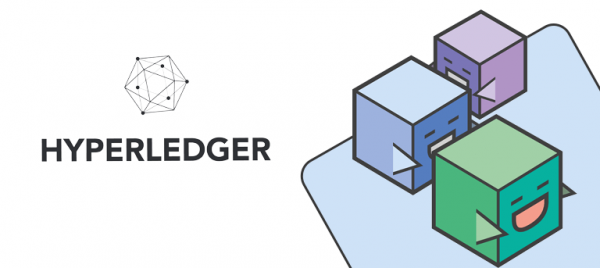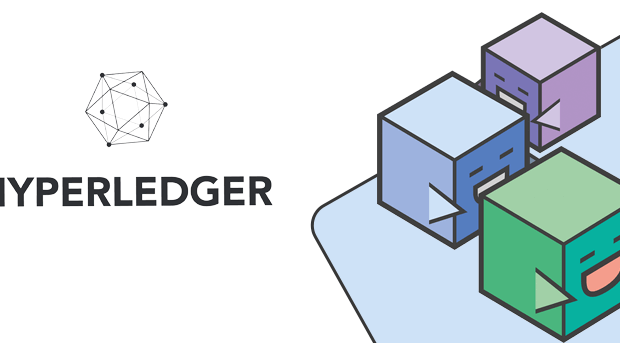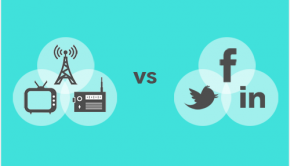Blockchain Hits Mainstream as Hyperledger Comes of Age
For some time, various articles have predicted that blockchain, the distributed ledger tech behind BitCoin, will move beyond its cryptocurrency roots and become a central technology in the enterprise space.
In our previous article, ‘8 Things you Need to Know Before You Start Your Blockchain App Development,’ we briefly mentioned Hyperledger Fabric as one of the most promising blockchain frameworks for enterprise. Only just over a year has passed since that article and it already appears that Hyperledger Fabric is starting to live up to the hype as real world businesses begin to offer blockchain solutions based on the technology.
It’s time to look in more depth at the Hyperledger Project and similar developments in the blockchain space to see how business owners could soon be making use of blockchain in their day-to-day business.

Challenges for a new decade
While there is a lot of positivity regarding blockchain, particularly with the issue of interoperability, it is important to remember that there are still some significant challenges that need to be overcome before the technology is truly accepted by the world of enterprise.
Problems with scalability, decentralization, standardization and even energy consumption need to be addressed and blockchain developers are still a rare breed and therefore expensive to acquire.
There is also the ongoing reputational damage that blockchain has sustained over its association with various cryptocurrency security issues. For example, it has been possible to add unwanted information, including images, to BitCoin transactions. Brent Whitfield, CEO of Los Angeles IT support firm DCG Inc. has explained in more detail. Although this doesn’t affect the security of the currency, it does undermine the trust that is so important with blockchain.
Taming the Blockchain
For most people, blockchain is synonymous with BitCoin and other cryptocurrencies. However, the application of distributed ledgers for automating and securing transactions of many different types soon led to feverish work on expanding the scope of blockchain technology.
To become a mainstream technology, it was clear to many organizations that performance and reliability issues would have to be ironed out. For example, the much-lauded Ethereum blockchain is currently capable of carrying out 15 transactions per second which is way, way too slow for practical use in, for example, international banking.
To address these kinds of issues, the Hyperledger Project was launched in December 2015 by the Linux community. It was designed to combine the best of the open source blockchains together. This was always going to be a big challenge since every blockchain naturally has its own means of identifying, validating and storing transactions. Of course, Hyperledger is not the only project with this aim. For example, 2019 also saw plenty of progress from the Polkadot Network, a similar project run by the non-profit Web3 Foundation.
However, we will stick with Hyperledger for now as a number of real world applications have already started using this platform as we will discuss below.
To achieve its goals, the Hyperledger Project brought together big players from a wide variety of disciplines. In addition to blockchain vendors and tech companies, Hyperledger worked with academic institutions and big corporations involved in finance, business and systems integration.
The Hyperledger Project has given rise to a number of different frameworks, the most well-known being Hyperledger Fabric. Other frameworks include Hyperledger Sawtooth, Hyperledger Iroha and Hyperledger Besu.
IBM and Walmart Introduce Hyperledger Fabric into the food supply chain
Although development work and the release of frameworks is important, real excitement for business owners comes when they can see how blockchain is likely to impact on their lives.
One use case from 2019 saw IBM, one of the key players in the development of Hyperledger and IT services provider to Walmart, test out blockchain in the food supply chain. Two proof of concept projects were launched, one focusing on tracing mangoes supplied to the US market and the other on pork sold in Chinese stores. Using blockchain technology based on Hyperledger Fabric, Walmart were able to reduce the time taken to find the source of its mangoes from over a week to just two days. This level of traceability could eventually mean the difference between isolating individual farms and entire areas in the case of food-borne diseases, reducing unnecessary food waste while keeping people safe. The blockchain was also able to verify the authenticity certificates provided by pork suppliers in China, adding much-needed trust to the system.
Spanish bank adds blockchain platform to service offering
In January 2020, Spanish bank CaixaBank, the country’s third largest bank, jumped on board by incorporating the cloud-based international trading platform we.trade into its suite of SME services. We.trade is built on the Hyperledger Fabric platform and, in the words of its COO Roberto Mancone, it is designed to enable, ‘businesses to trade, seamlessly, simply and with trust.’
It is not the first bank to start using Hyperledger blockchain tech. In April 2019, the Bank of Cambodia announced plans to use the Hyperledger Iroha platform together with its own cryptocurrency. It became the first bank in the world to use a blockchain-mediated payment system domestically and is now looking at its potential for cross-border payments by working with Maybank (a Malaysian bank). Currently, Cambodians working in Malaysia often have to face delays and pay fees and commissions of up to a third when sending money back home through the traditional banking system. Blockchain could slash these costs and make such transactions happen in real time.
The same motivation is behind the National Payments Corporation of India (NPCI) who recently launched its Vajra platform for faster, more secure and more accurate payment processing. Hyperledger Fabric was one of the platforms used during the development phase of Vajra.
In June, blockchain received a significant reputation boost when Visa released its Visa B2B Connect service following a successful 18 month trial. Visa B2B Connect uses Hyperledger Fabric to facilitate digital-first global corporate payments.
More promising blockchain projects
While Hyperledger Fabric is certainly making a positive name for itself, it is only one aspect of a very active field of development. Other blockchain projects to keep an eye out for over the coming months and years include:
- Similar projects from R3 (Corda Enterprise), the Web3 Foundation (Polkadot Network), Ethereum and others.
- Blockchain-as-a-service (BaaS). Amazon, IBM and Microsoft have all recently launched managed Blockchain services with Chinese tech giant Baidu the latest to join the party. This is expected to appeal to SMEs who lack the finances and technical knowhow to deploy custom blockchain solutions.
- Blockchain-mediated Digital Rights Management (e.g. in gaming transactions).
- BitCoin kiosks for purchasing BitCoin on the high street.
- The rise of stablecoins. These are cryptocurrencies designed to be less volatile than traditional digital coins.
- The development of Facebook’s own digital currency, Libra.
- Central bank digital coins. The supposed launch of a Tunisian digital currency proved to be fake news but there is certainly a lot of interest in this field.
Conclusion
Hyperledger Fabric and other collaborative blockchain technologies have always had a powerful USP that applies across business sectors: that is, the ability to use cryptographic techniques to confirm the validity of a transaction without a third party. Up to now, performance and reliability limitations have held back development but the success of Hyperledger Fabric in real world use cases suggests we have finally turned a corner.
As the Internet of Things expands and technologies such as 5G increase the speed at which transactions happen, the need for an enterprise-ready blockchain will only increase. These are certainly exciting times to be a business owner.















